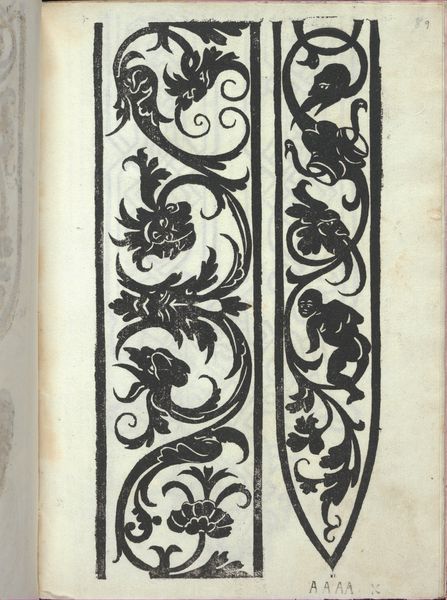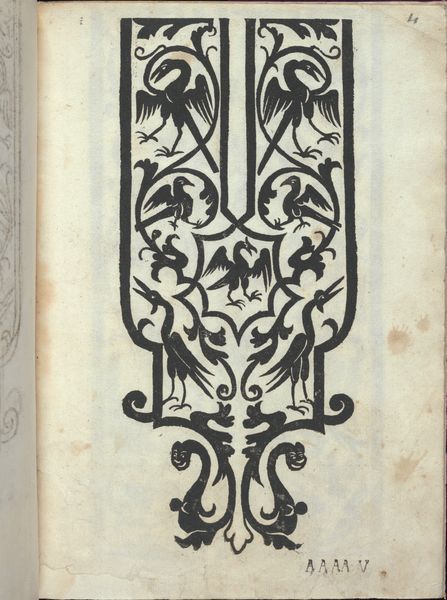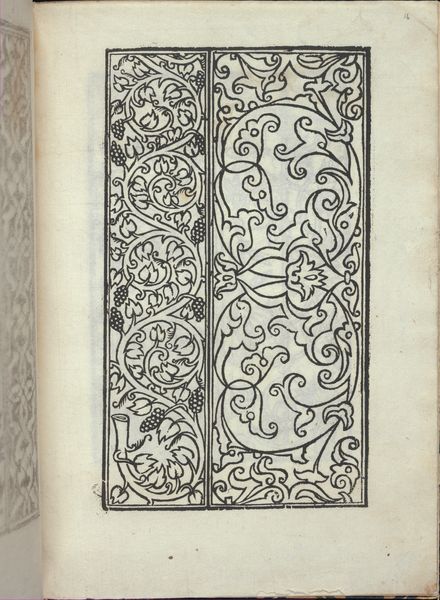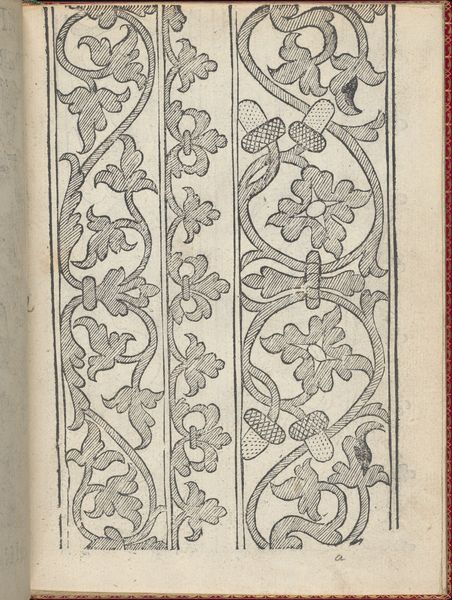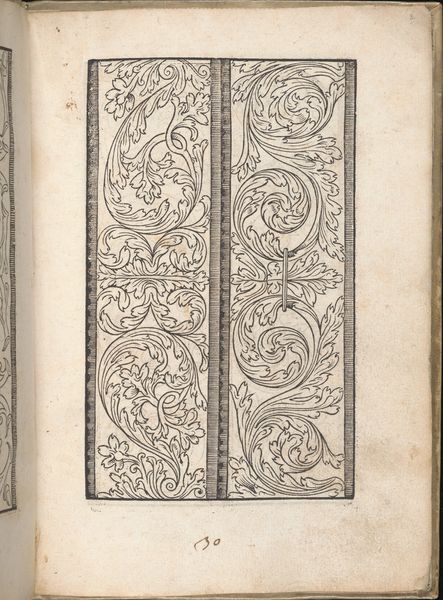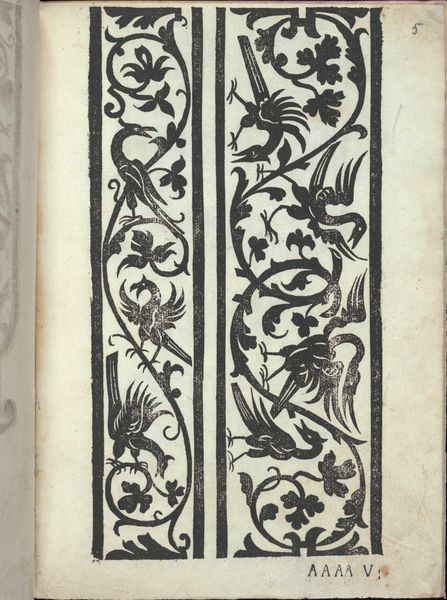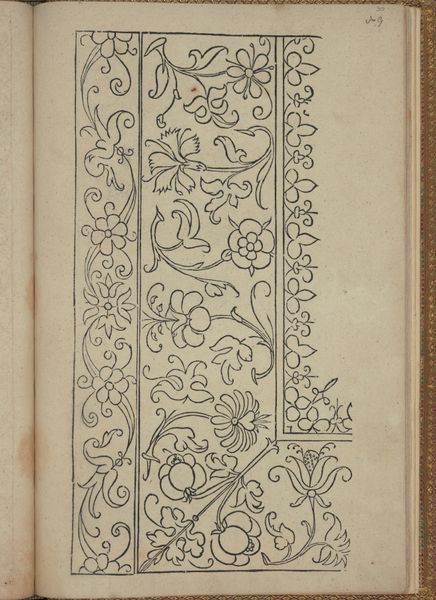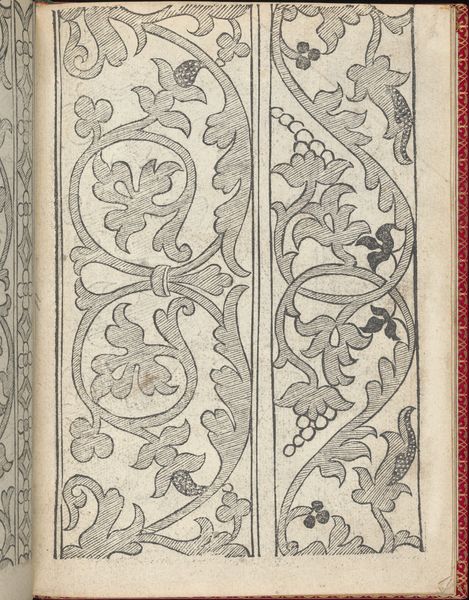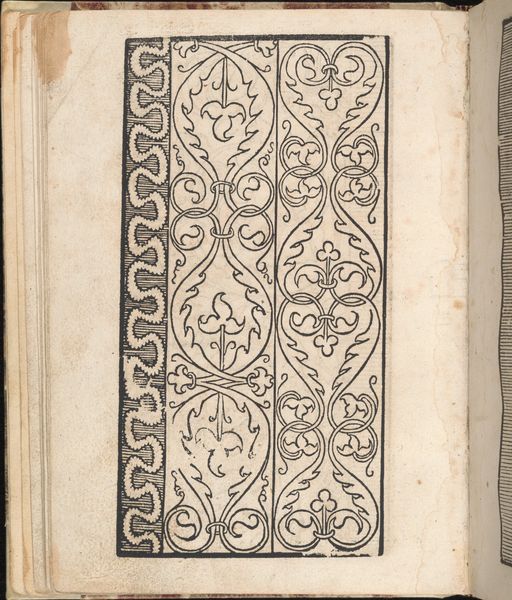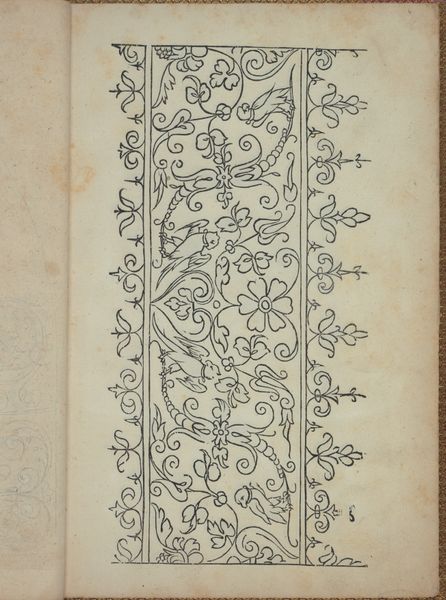
Libro quarto. De rechami per elquale se impara in diuersi modi lordine e il modo de recamare...Opera noua, page 7 (recto) 1532
0:00
0:00
drawing, print, paper, woodcut
#
drawing
# print
#
book
#
figuration
#
paper
#
11_renaissance
#
geometric
#
woodcut
#
decorative-art
#
italian-renaissance
Dimensions: Overall: 8 3/8 x 5 7/8 x 3/16 in. (21.2 x 14.9 x 0.5 cm)
Copyright: Public Domain
Curator: Before us is a page from Alessandro Paganino's "Libro quarto. De rechami," printed in Venice in 1532. This book showcases patterns for embroidery. Editor: It strikes me as remarkably crisp for a print of its age. I notice the strong black lines, and how they create such striking visual rhythms. It’s almost hypnotic. Curator: These woodcut patterns, designed for needlework, demonstrate how print culture disseminated decorative ideas. It effectively democratized access to design. Before these publications, such patterns would’ve been unique to the wealthy, painstakingly created on commission. Editor: And that access hinges on the very materiality of it, doesn’t it? The relative ease of reproducing woodcuts on paper using a printing press reshaped not only embroidery but the whole system by which designs circulated, affecting the labor that goes into it, from design to manufacture to its availability in the marketplace. Curator: Precisely. The "Libro quarto" reveals the ambition to standardize and teach the craft. Consider how such printed guides would have expanded women’s participation in these skills outside courtly settings, potentially offering new avenues for economic independence. Editor: It makes you consider the unseen labour that lies behind even these simple black lines. And who would have used these patterns? How would they modify them? What social status was required to read and produce these embroideries? I like seeing the page itself with its aging paper that tells so many silent stories about past craftsmanship. Curator: Yes, it shows us how skills were shared and circulated through a rapidly evolving media landscape. The very notion of craft and "high art" began to blur as these books reached a broader public. Editor: Thinking about how a simple piece of paper could carry such practical know-how makes you appreciate the hidden technology in early printed materials, beyond their artistic or aesthetic value. Curator: Absolutely. A single page offers a window into a transformative period in design history, demonstrating shifts in production and access, echoing how cultural expressions can shape socio-economic transformations. Editor: It speaks to the beautiful dance of form, material, and labour that we should not neglect.
Comments
No comments
Be the first to comment and join the conversation on the ultimate creative platform.
